The world of sales is booming and is becoming more and more crucial each day to stay on top of key metrics and make data-driven decisions. However, sifting through endless spreadsheets and reports is time-consuming and tedious. This is where HubSpot sales dashboards can help you.
This blog will guide you on what a reporting dashboard is, how to create one.
What is HubSpot Reporting Dashboard?
HubSpot reporting dashboard is a powerful tool that provides an overview of your performance within the HubSpot platform. It connects your CRM data to your sales and marketing one and acts as a single source of truth. Moreover, you can create customized reporting dashboards according to your business needs.
HubSpot also offers a dashboard template library with pre-built dashboards. You can start with those templates and then further tailor them using the drag-and-drop editor. Furthermore, you can set public or private reports and dashboards, which means that you can share your data securely.
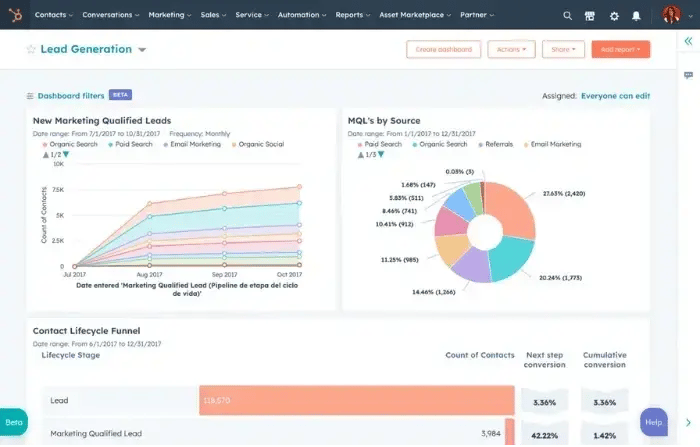
Credits: HubSpot
14 HubSpot Sales Dashboard Examples
There is no single dashboard that you can apply to all sales organizations universally, therefore, here are some HubSpot sales dashboard examples that you can make use of.
1. Target Accounts Overview
The main goal of a Target account overview dashboard is to gain a view of your most valuable accounts. You can measure metrics like the number of target accounts, average deal size, lead score, and account lifecycle stage, etc. You can easily identify accounts that are lagging in the pipeline.
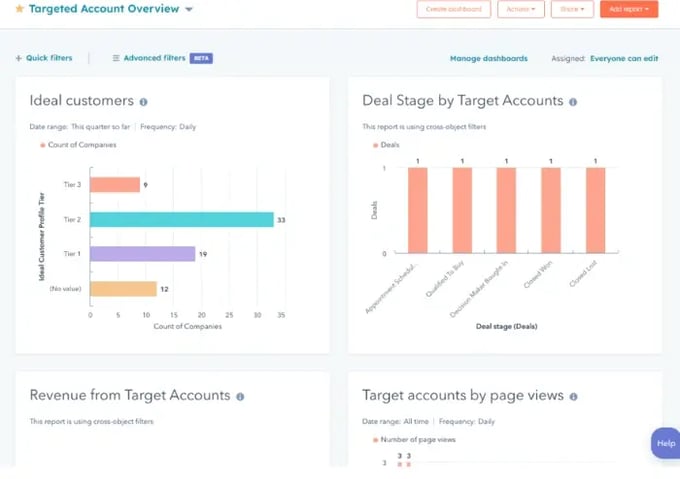
2. High-Level View of Sales Activities
This dashboard allows you to monitor the overall health and activity level of your sales team through metrics such as the number of calls, emails sent, meetings booked, and tasks completed.
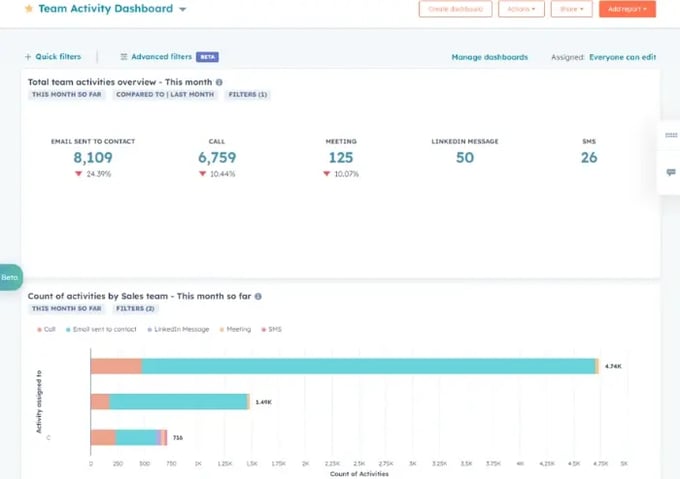
3. Completion/Task Tracking
Completion/task tracking dashboard lets you hold your team accountable for completing critical sales tasks. It provides a clear view of task assignments and deadlines. With the help of this dashboard, you can view metrics like task overview, project status, team performance, priority breakdown, and deadline risk, etc. You can identify areas for streamlining your workflow and improve efficiency.
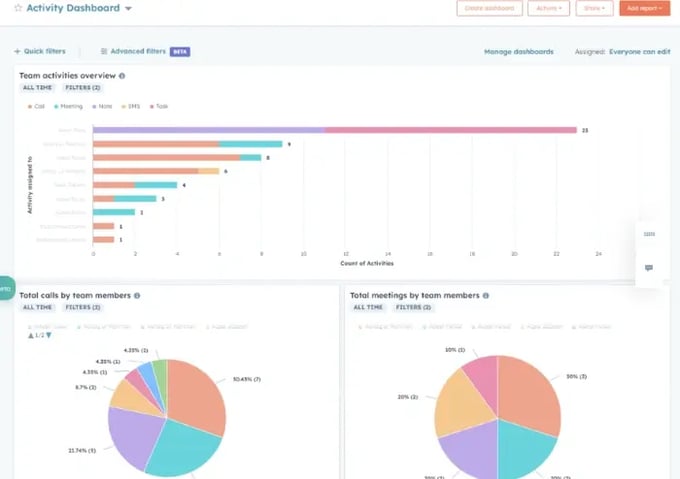
4. Account-Based Marketing
Measure the effectiveness of your ABM campaigns targeting key accounts with the help of an account-based marketing dashboard. You can track how your target accounts are interacting with your marketing campaigns like email opens. This way, you will be able to refine your AB and campaigns based on content engagement within target accounts. The account overview displays activities associated, contacts, deals, tracked pages, campaign performance, engagement score, account timeline etc.

5. Sales Opportunity
You can gain real-time insights into your sales pipeline and forecast future revenue by using this dashboard. Other reports usually track what has been done, but this one looks at the opportunities that need to be done yet in order to reach goals. The main metrics include deal value, total value of all opportunities at each stage, win/ loss rates by deal size, sales rep performance, deal age analysis, and more.
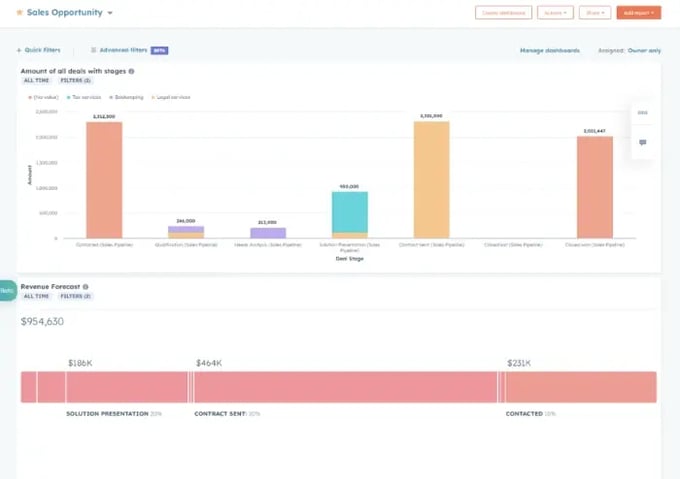
6. Sales Conversion Rate Dashboard
HubSpot offers a free Sales Conversion and Close Rate Calculator that you can use to calculate progress throughout the sales timeline. It is an interactive dashboard, and you can set your goals by forecasting your SQL to Opportunity rate, SQL to customer rate by month or quarter, etc. It also includes a deal and MRR pipeline tracker.
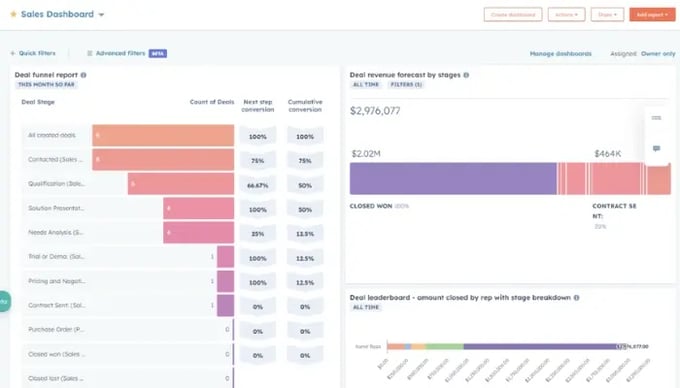
7. Sales Rep Dashboard
You should provide sales representatives with a functional dashboard to track their individual performances. Whatever the key performance metrics that your company uses, this dashboard includes reports for them. Popular KPIs include meetings booked, calls made, active deals, forecasted revenue, etc.
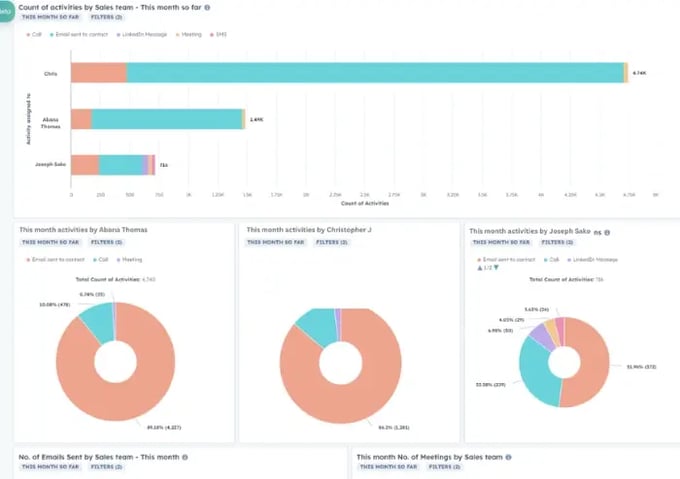
8. Sales Manager Dashboard
This one is for the managers. Using this dashboard, managers can get an overview of the key metrics of a sales representative, which helps them measure performance. As a manager, you can view the monthly progress and MRR goal and a section for today’s stats.
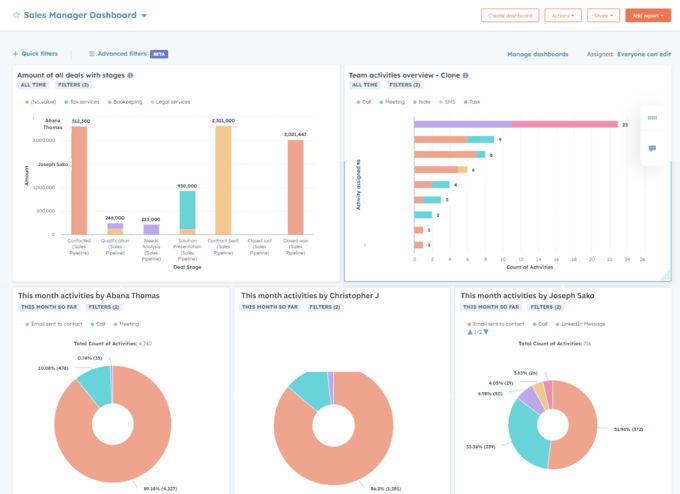
9. Sales Leaderboard
Want to know who is performing the best in the sales team? The leaderboard dashboard can assist you. It includes information on:
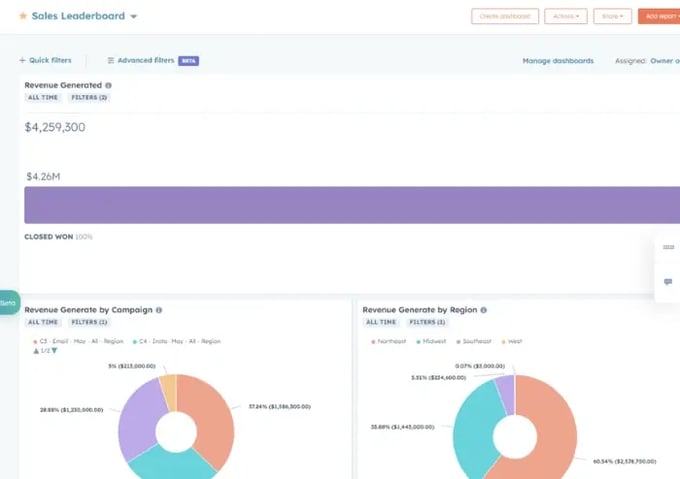
10. Deal Performance Dashboard
A deal performance dashboard is a great way to let members of your sales team see what revenue the company is expecting them to close. It also compares how many deals have been closed compared to the actual goal.
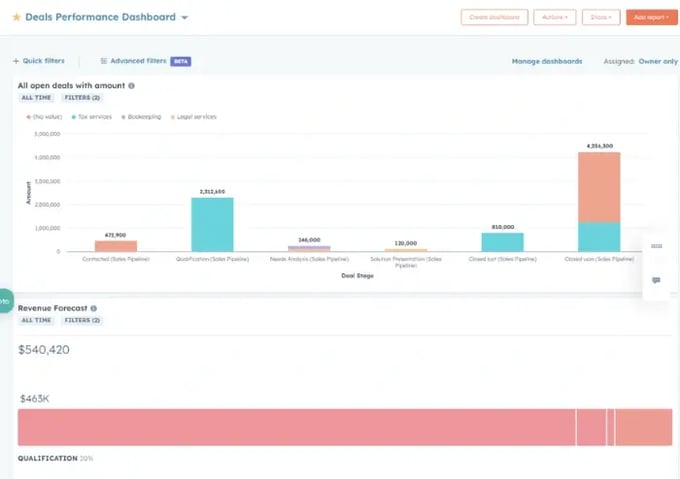
11. Win/Loss Dashboard
The win/loss dashboard allows you to analyze the reasons behind the winning and loss of deals. It provides metrics like deal size and salesperson. You can use it to identify the reasons driving or impeding the success of the sales team.
With the help of a win/loss dashboard, you will be able to identify areas of improvement in your sales pitch or address the objections put in by customers.
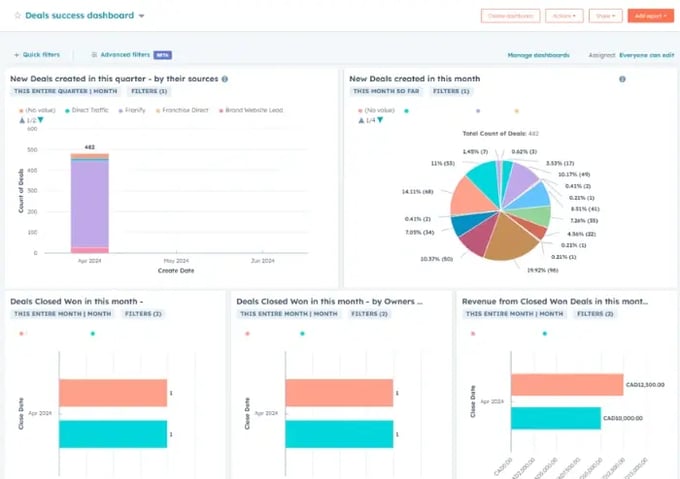
12. Sales Performance by Region
It is important for companies to know what customers are buying and where they are making the most sales. Sales performance by region dashboard will help you understand these points with an additional overview of MRR comparison. It helps you gain insights into regional sales patterns and growth trends. Key metrics include:
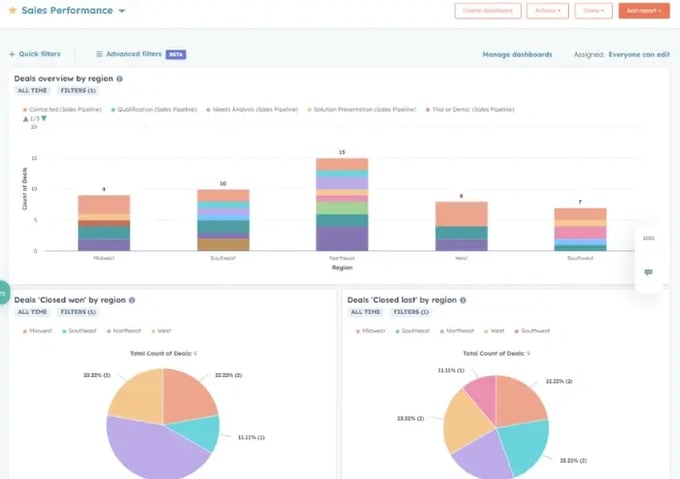
13. Performance Overview Sales Dashboard
If you want to view all key performance metrics clearly, then this board is for you. When the dashboard loads, you will be able to see the most valuable information first. Basically, this dashboard allows you to track the overall performance of your team and identify any areas for improvement. The top metrics include the number of deals in the pipeline, win rate, total sales, sales quota, etc.
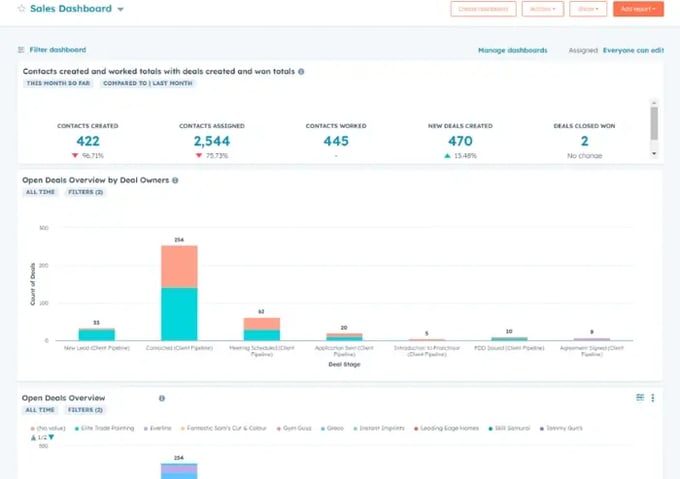
14. Sales To Target Dashboard
Track the sales targets of your company with the help of this dashboard. You can set your own company sales target by team or opportunity type. Moreover, it lets you track progress by month, quarter, or year without much hassle. It does so through measuring:
-
Sales vs target
-
Remaining target
-
Days left
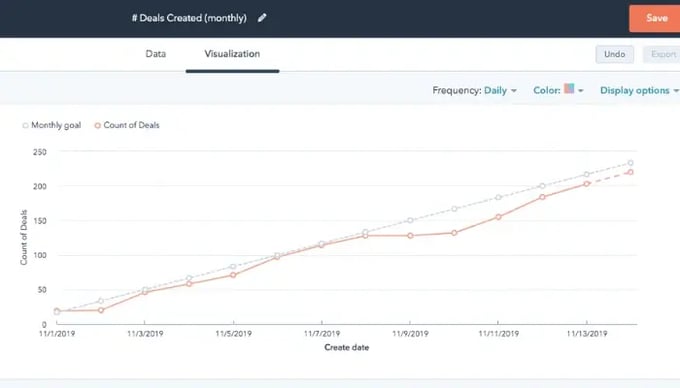
Credits: HubSpot
How to Create a HubSpot Reporting Dashboard?
Now that you are familiar with what a HubSpot reporting dashboard is, let’s look at how you can create one.
Step 1: Access Dashboard
-
Log in to your HubSpot account.
-
Go to the Reports section, then click on "Dashboards."
-
In the upper right corner, you will find a "Create dashboard" button.

Step 2: Choosing a Starting Point
HubSpot offers you two options to get started with your dashboard:
Pre-made Templates
HubSpot provides pre-built dashboard templates for various goals, like Marketing Performance or Sales Pipeline. These templates can be a time-saver if they align with your needs.
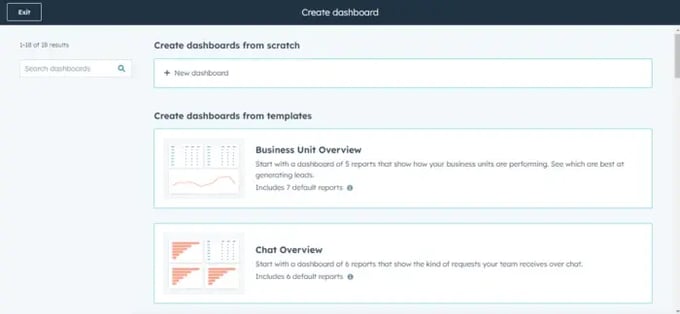
Custom Dashboard
If you have a specific set of metrics in mind, you can build a custom dashboard from scratch.
Step 3: How to Build a Custom Dashboard (Optional)
-
Select "Custom Dashboard" which will direct you to the dashboard library.
-
On the right-hand side, you will see a list of reports categorized by Marketing, Sales, Service, and Website.
-
Choose the reports relevant to your dashboard's objective by checking the boxes next to them.
-
You can further refine the reports by customizing their date range and other filters.
-
Once you have selected the reports, click "Next."
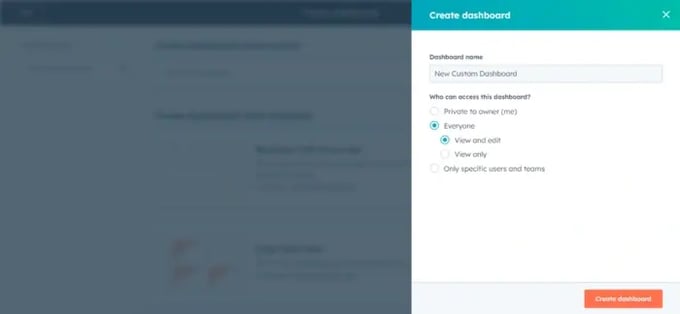
Step 4: Finalize Your Dashboard
Sales Dashboard Best Practices
Here are some tips to consider before creating your own sales dashboard.
1. Align with Goals
Before you build your dashboard, identify what your sales goals are and what you want to track.
2. Focus on KPIs
KPIs are the metrics that track the performance of the sales team members. Do not overload the dashboard. Instead, focus on metrics that are highly impactful.
3. Make it Simple
Use clear labels and use consistent font and colors to make data easier to understand.
4. Visualize
Use charts and other visuals to present your data so that you can see patterns and trends in data quickly.
5. Accessible
Make sure that your dashboard is easily accessible to all the members, from sales reps to managers.
6. Keep it Up-to-Date
You have to ensure that your data is accurate and refreshes every day. If there is inaccurate data, it can lead to bad decisions.
Conclusion
HubSpot sales dashboards are powerful tools that allow you to track your sales team's performance. It offers a variety of built-in dashboards that you can use as they are or customize according to your needs. There are several sales dashboard examples, out of which, fifteen, have been discussed in this blog. Use these to make sure that your sales team achieves its goals.
Make sure that your sales dashboard is simple, easily accessible by team members, up to date, and has visualization to get a better idea of what’s going on.
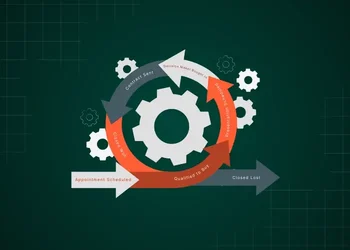
-1.webp?format=webp&width=400&height=250&name=HubSpot%20Dashboard%20Examples%20(2)-1.webp)
